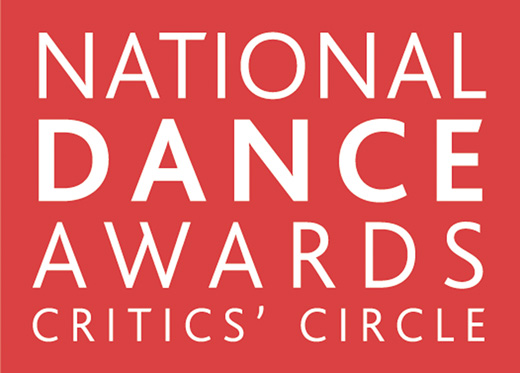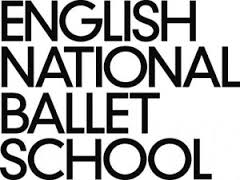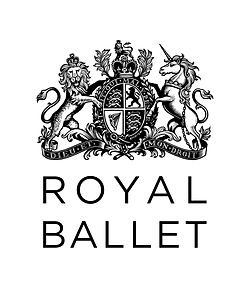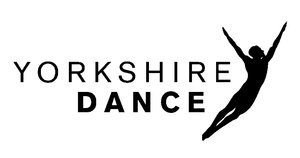 The Dance Section of the Critics’ Circle has announced the list of nominations for the 14th National Dance Awards, to be awarded at a central London venue on 27 January 2014. The National Dance Awards have been organised each year since 2000, celebrating the variety of Britain’s dance culture. They are the only awards given by the body of professional dance critics in the UK.
The Dance Section of the Critics’ Circle has announced the list of nominations for the 14th National Dance Awards, to be awarded at a central London venue on 27 January 2014. The National Dance Awards have been organised each year since 2000, celebrating the variety of Britain’s dance culture. They are the only awards given by the body of professional dance critics in the UK.
Grishko are continuing as headline event sponsors as well as sponsoring the Best Female Dancer Award, which is given in memory of Richard Sherrington; Dancing Times will continue its long-running arrangement to sponsor the Best Male Dancer Award and other sponsors continuing for a further year include Stef Stefan, sponsoring both the Outstanding Company and Best Modern Choreography Awards; the Ballet Association for the Best Classical Choreography Award; Lee McLernon for the Outstanding Female Performance (Classical) and the Critics’ Circle. The event will also play host to the De Valois Award for Outstanding Achievement and the Dance UK Industry Award, given in memory of Jane Attenborough, for both of which there are no prior nominations.
It is clear that there is a vast and rich choice for the National Dance Awards, and the results are eagerly anticipated.
DANCING TIMES AWARD FOR BEST MALE DANCER
Dane HURST (RAMBERT)
Vadim MUNTAGIROV (ENGLISH NATIONAL BALLET)
Sergei POLUNIN (MOSCOW STANISLAVSKY BALLET and GUEST ARTIST, THE ROYAL BALLET)
Edward WATSON (THE ROYAL BALLET)
GRISHKO AWARD FOR BEST FEMALE DANCER
Maria KOCHETKOVA (SAN FRANCISCO BALLET)
Natalia OSIPOVA (MIKHAILOVSKY BALLET and GUEST ARTIST, THE ROYAL BALLET & BOLSHOI BALLET)
Olga SMIRNOVA (BOLSHOI BALLET)
Eva YERBABUENA (BALLET FLAMENCO EVA YERBABUENA)
STEF STEFANOU AWARD FOR OUTSTANDING COMPANY
BOSTON BALLET
MIKHAILOVSKY BALLET
ROSAS
SAN FRANCISCO BALLET
BEST CLASSICAL CHOREOGRAPHY
Mark MORRIS (‘BEAUX’ for SAN FRANCISCO BALLET)
David NIXON (‘THE GREAT GATSBY’ for NORTHERN BALLET)
Alexei RATMANSKY (’24 PRELUDES’ for THE ROYAL BALLET)
Christopher WHEELDON (‘AETERNUM’ for THE ROYAL BALLET)
BEST MODERN CHOREOGRAPHY
Guilherme BOTELHO (‘SIDEWAYS RAIN’ for ALIAS)
Matthew BOURNE (‘SLEEPING BEAUTY’ for NEW ADVENTURES)
Sidi Larbi CHERKAOUI (‘PUZ/ZLE’ for EASTMAN)
Russell MALIPHANT (‘FALLEN’ for BalletBoyz® TheTALENT)
OUTSTANDING FEMALE PERFORMANCE (CLASSICAL)
Nancy OSBALDESTON (for The Ballerina in ‘PETRUSHKA’ for ENGLISH NATIONAL BALLET)
Cira ROBINSON (in ‘WAR LETTERS’ for BALLET BLACK)
Akane TAKADA (for Olga in ‘ONEGIN’ for THE ROYAL BALLET)
YUAN YUAN TAN (in ‘RAkU’ for SAN FRANCISCO BALLET)
OUTSTANDING MALE PERFORMANCE (CLASSICAL)
Jeffrey CIRIO (in ‘PLAN TO B’ for BOSTON BALLET)
Israel GALVÁN (for Flamenco Performances at SADLER’S WELLS)
Nicolas LE RICHE (in ‘LE JEUNE HOMME ET LA MORT’ for ENGLISH NATIONAL BALLET)
Brian MALONEY (for Bratfisch in ‘MAYERLING’ for THE ROYAL BALLET)
OUTSTANDING FEMALE PERFORMANCE (MODERN)
Julie CUNNINGHAM (in ‘NEW WORKS 2012’ for MICHAEL CLARK COMPANY)
Rocío MOLINA (in ‘DANZAORA’ at SADLER’S WELLS)
Clemmie SVEAAS (in ‘WITCH-HUNT’ for BERN BALLETT)
Hannah VASSALLO (for Aurora in ‘SLEEPING BEAUTY’ for NEW ADVENTURES)
OUTSTANDING MALE PERFORMANCE (MODERN)
Nathan GOODMAN (in ‘MADCAP’ for RICHARD ALSTON DANCE COMPANY)
Christopher MARNEY (Count Lilac in ‘SLEEPING BEAUTY’ for NEW ADVENTURES)
Liam RIDDICK (in ‘BUZZING ROUND THE HUNISUCCLE’ for RICHARD ALSTON DANCE COMPANY)
Paul WHITE (in ‘THE ORACLE’ for MERYL TANKARD)
BEST INDEPENDENT COMPANY
bGROUP
BalletBoyz® The TALENT
NEW MOVEMENT COLLECTIVE
SHOBANA JEYASINGH DANCE

 The UK’s largest dance house, Sadler’s Wells, has announced plans for a new performance space as part of its recent ten year plan. The vision of Artistic Director and Chief Executive, Alistair Spalding, is one which is ambitious, but exciting for a city in which dance thrives. The announcement came almost ten years after he was appointed in his current role, and outlines plans for the next decade.
The UK’s largest dance house, Sadler’s Wells, has announced plans for a new performance space as part of its recent ten year plan. The vision of Artistic Director and Chief Executive, Alistair Spalding, is one which is ambitious, but exciting for a city in which dance thrives. The announcement came almost ten years after he was appointed in his current role, and outlines plans for the next decade. 2013 marks the 25th anniversary of English National Ballet School, to be celebrated by a series of events which showcase the skills and talents of the students. The events will kick off with a 90 minute live broadcast from the School on 28 November, during which audiences will have a unique insight into a day in the life of the students. Also included in the broadcast will be an interview with Tamara Rojo, Artistic Director of English National Ballet, with the School being a common feeder for the main company.
2013 marks the 25th anniversary of English National Ballet School, to be celebrated by a series of events which showcase the skills and talents of the students. The events will kick off with a 90 minute live broadcast from the School on 28 November, during which audiences will have a unique insight into a day in the life of the students. Also included in the broadcast will be an interview with Tamara Rojo, Artistic Director of English National Ballet, with the School being a common feeder for the main company. The Royal Ballet has recently hit cinemas all over America and is continuing to do! Select cinemas throughout the United States will present the 2013 ‘Royal Opera House Ballet Series,’ featuring 3, one-night-only screenings of the new Don Quixote staged by and starring Carlos Acosta, Christopher Wheeldon’s Alice’s Adventures in Wonderland, and Peter Wright’s classic production of The Nutcracker. High definition cameras are used to film the performances, which provide multiple points of view including close-ups and wide shots with a Royal Opera House production truck transmitting the live feed via satellite to the US.
The Royal Ballet has recently hit cinemas all over America and is continuing to do! Select cinemas throughout the United States will present the 2013 ‘Royal Opera House Ballet Series,’ featuring 3, one-night-only screenings of the new Don Quixote staged by and starring Carlos Acosta, Christopher Wheeldon’s Alice’s Adventures in Wonderland, and Peter Wright’s classic production of The Nutcracker. High definition cameras are used to film the performances, which provide multiple points of view including close-ups and wide shots with a Royal Opera House production truck transmitting the live feed via satellite to the US. Historically, the term ‘Achilles Heel’ referred to the greatest weakness of an individual: Achilles was a figure of Greek Mythology, a hero of the Trojan War killed by a small injury to his heel. Today, following this tale, the Achilles is the small tendon connecting the calf muscle to the heel bone. The tendon is still a weakness for many dancers, most notable recently was the snapping of the tendon of a Bolshoi dancer during a performance. This was a result of tendonosis, a chronic and more serious condition where bouts of tendonitis are not treated properly or the dancer does not take adequate time to rest.
Historically, the term ‘Achilles Heel’ referred to the greatest weakness of an individual: Achilles was a figure of Greek Mythology, a hero of the Trojan War killed by a small injury to his heel. Today, following this tale, the Achilles is the small tendon connecting the calf muscle to the heel bone. The tendon is still a weakness for many dancers, most notable recently was the snapping of the tendon of a Bolshoi dancer during a performance. This was a result of tendonosis, a chronic and more serious condition where bouts of tendonitis are not treated properly or the dancer does not take adequate time to rest. The Place is once again opening it’s annual Resolution! festival up to reviewers who wish to be partnered by a professional critic and pass judgment on some of the UK’s most promising new dance companies. The Place has engaged with audiences and participants, championed the best ideas, and created inspiring conditions for artists and enthusiasts to realise their potential for over forty years, including that of Resolution!. Combining London Contemporary Dance School, Richard Alston Dance Company and the Robin Howard Dance Theatre, together with pioneering learning, teaching, outreach, recreation and professional development projects The Place champions contemporary dance in particular, and all its strands.
The Place is once again opening it’s annual Resolution! festival up to reviewers who wish to be partnered by a professional critic and pass judgment on some of the UK’s most promising new dance companies. The Place has engaged with audiences and participants, championed the best ideas, and created inspiring conditions for artists and enthusiasts to realise their potential for over forty years, including that of Resolution!. Combining London Contemporary Dance School, Richard Alston Dance Company and the Robin Howard Dance Theatre, together with pioneering learning, teaching, outreach, recreation and professional development projects The Place champions contemporary dance in particular, and all its strands. Swindon school pupils have learnt how to use dance to counter the threat of bullies, taking time out from lessons to learn about bullying through the medium of dance. Students at Holy Rood Junior School were given a talk by Pat O’Driscoll, who runs a local Matt Fiddes martial arts school, about bullying and how to counter it before his daughter Megan led a street dance session. Such a great initiative could be effective rolled out to other mainstream schools across the country.
Swindon school pupils have learnt how to use dance to counter the threat of bullies, taking time out from lessons to learn about bullying through the medium of dance. Students at Holy Rood Junior School were given a talk by Pat O’Driscoll, who runs a local Matt Fiddes martial arts school, about bullying and how to counter it before his daughter Megan led a street dance session. Such a great initiative could be effective rolled out to other mainstream schools across the country. Beginning pointe work is not to be taken lightly or begun before your body is ready: going on pointe before this can cause foot deformities, for example, and other problems later in life. Factors such as age, parental expectations and the students’ desire to go on pointe are not substantial in determining if a student should starting training on pointe, with teachers needing to consider range of movement in the foot and ankle, technical ability and inherent bodily design overall.
Beginning pointe work is not to be taken lightly or begun before your body is ready: going on pointe before this can cause foot deformities, for example, and other problems later in life. Factors such as age, parental expectations and the students’ desire to go on pointe are not substantial in determining if a student should starting training on pointe, with teachers needing to consider range of movement in the foot and ankle, technical ability and inherent bodily design overall. The 2013 Youth Dance Conference, named ‘Dance Insights – working together for the future of dance’, will take place on 20 November at CAST, Doncaster’s new performance venue in Yorkshire. The conference will cover teaching dance, health and wellbeing, and leadership in the context of working with young people on challenging economic times.
The 2013 Youth Dance Conference, named ‘Dance Insights – working together for the future of dance’, will take place on 20 November at CAST, Doncaster’s new performance venue in Yorkshire. The conference will cover teaching dance, health and wellbeing, and leadership in the context of working with young people on challenging economic times.